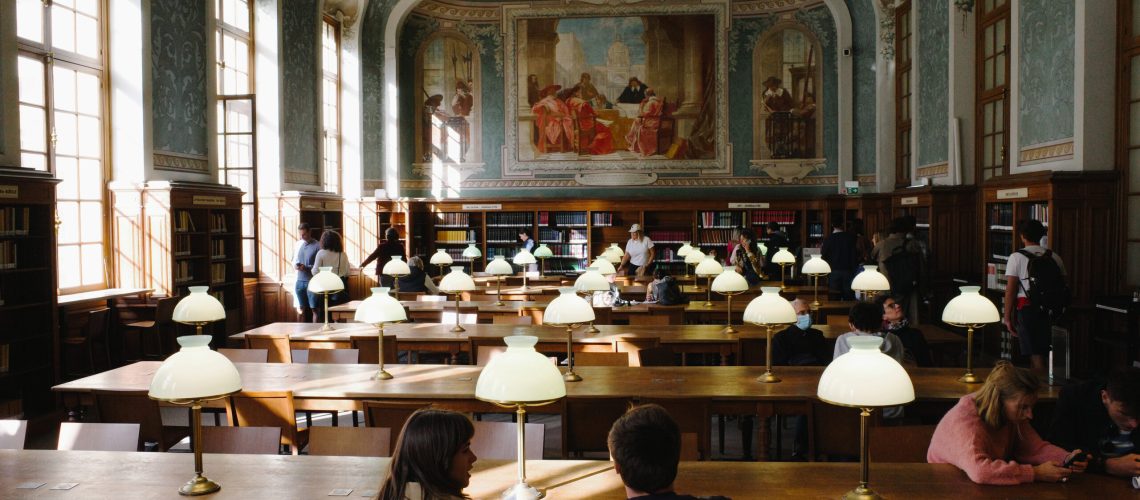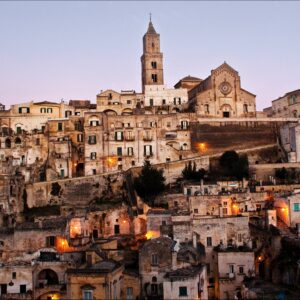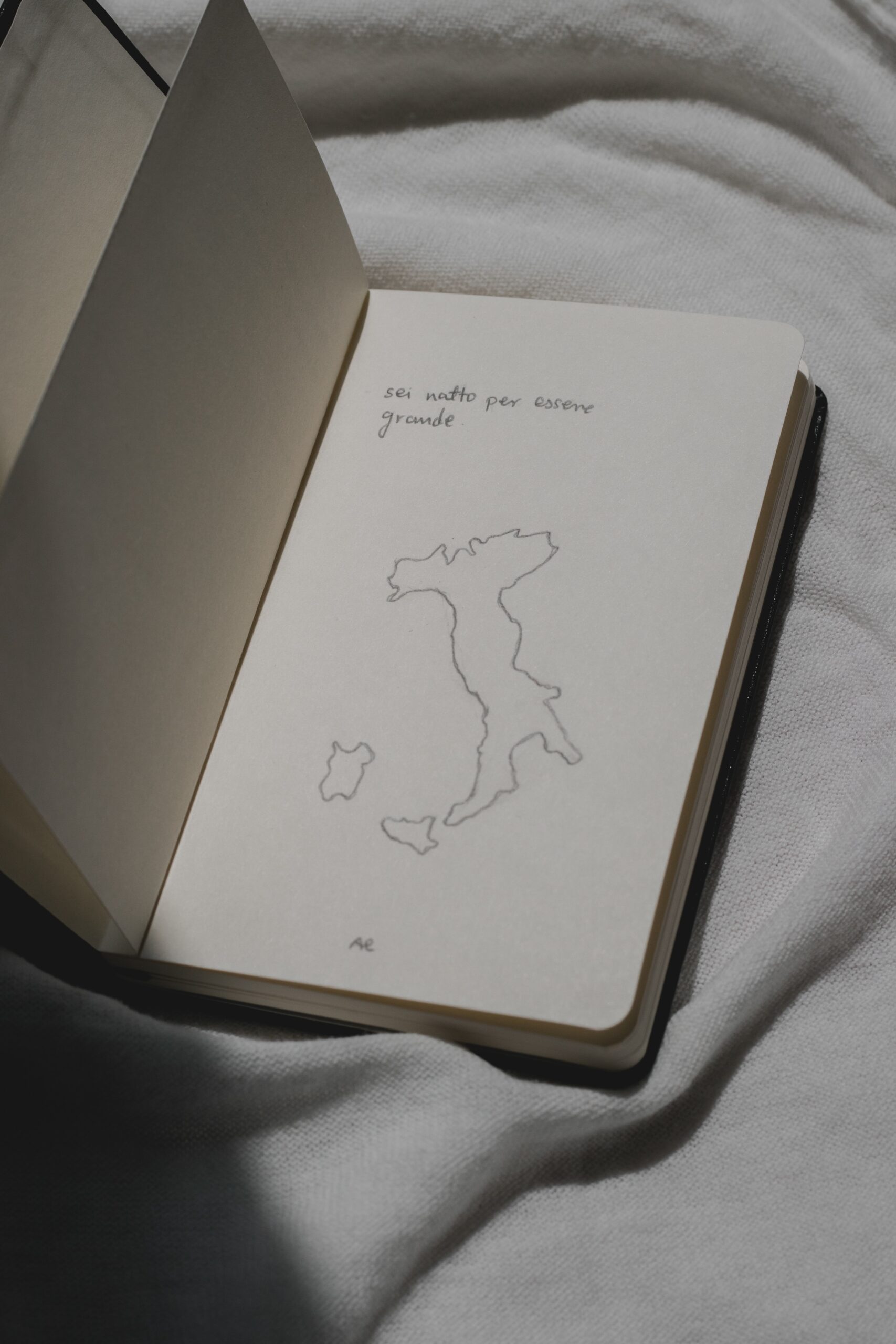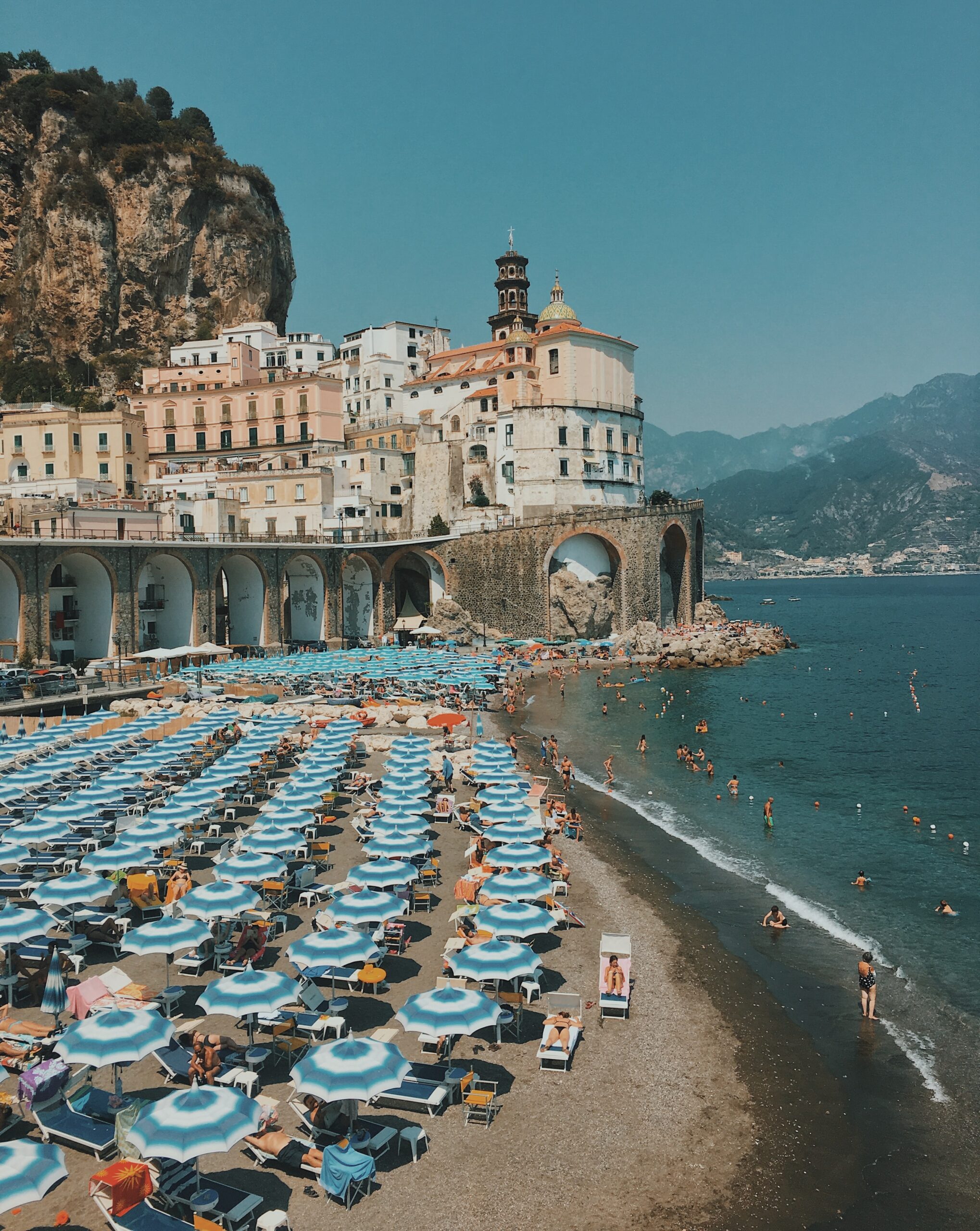I left the amphitheater and went through a hallway with impressionist-style frescoes depicting women as human versions of the various disciplines. They all bore Greek titles such as Poesis, the root word for poetry, as if to show the university’s connection to Classical Antiquity.

I headed down the stairs and found myself in a courtyard. To my left was the library and straight ahead was the Sorbonne chapel. I carried on straight and entered the chapel. At first glance, I was surprised by how dilapidated it looked. Apparently, much of it had been destroyed during the French Revolution, when many religious buildings, which were always associated with the powers that be, were desecrated and, in some cases, completely razed.
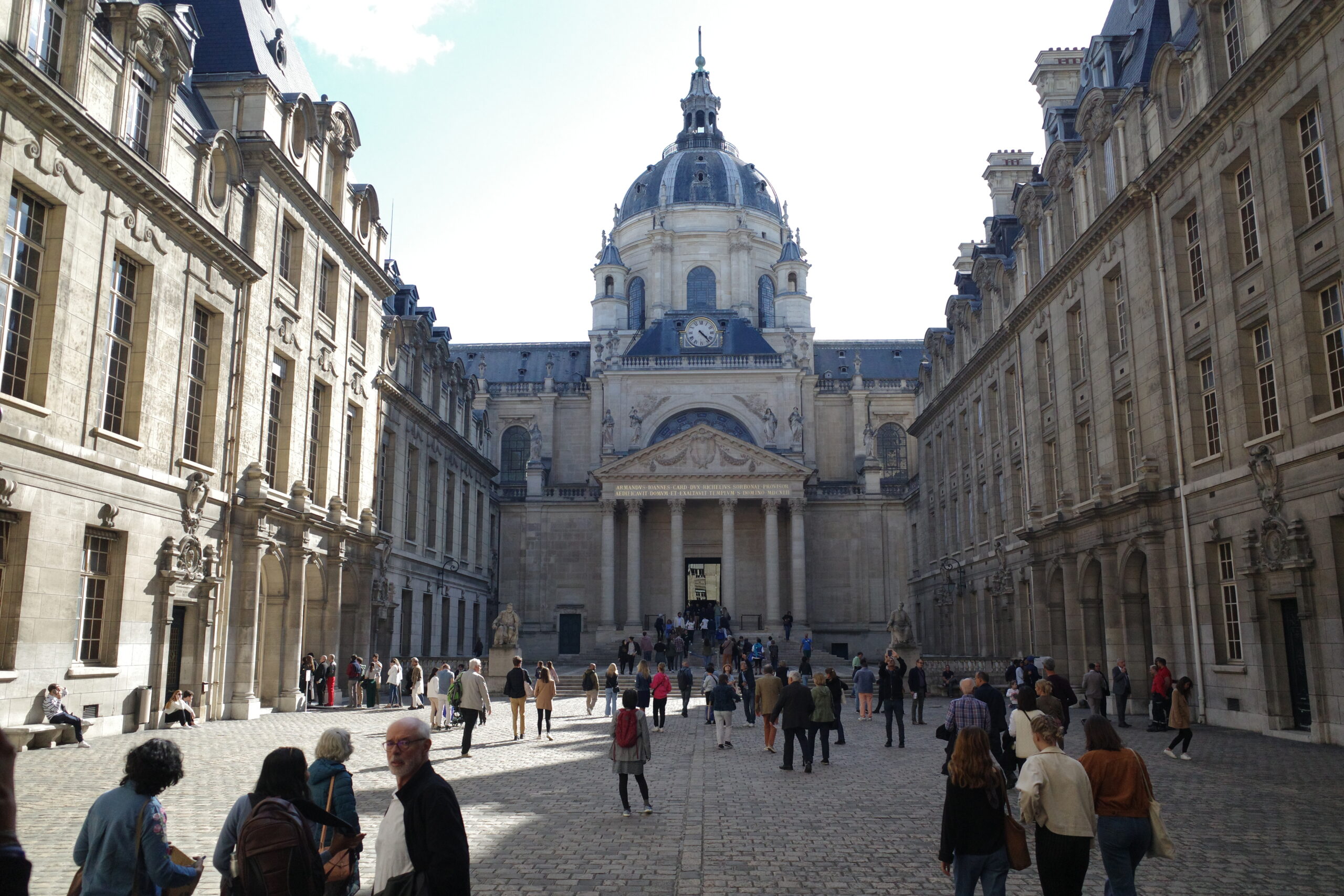
This chapel had managed to survive such a fate but it still looked surprisingly barebones — like a home with white walls and no furnishings. It was hard to imagine anyone actually worshiping inside it. An organ was up above, but there were no pews or anything. I passed the tomb of Cardinal Richelieu before heading back outside. While the chapel may be the symbol of the Sorbonne — and indeed, the one thing that people see from the outside — it seemed to be merely that, a symbol.
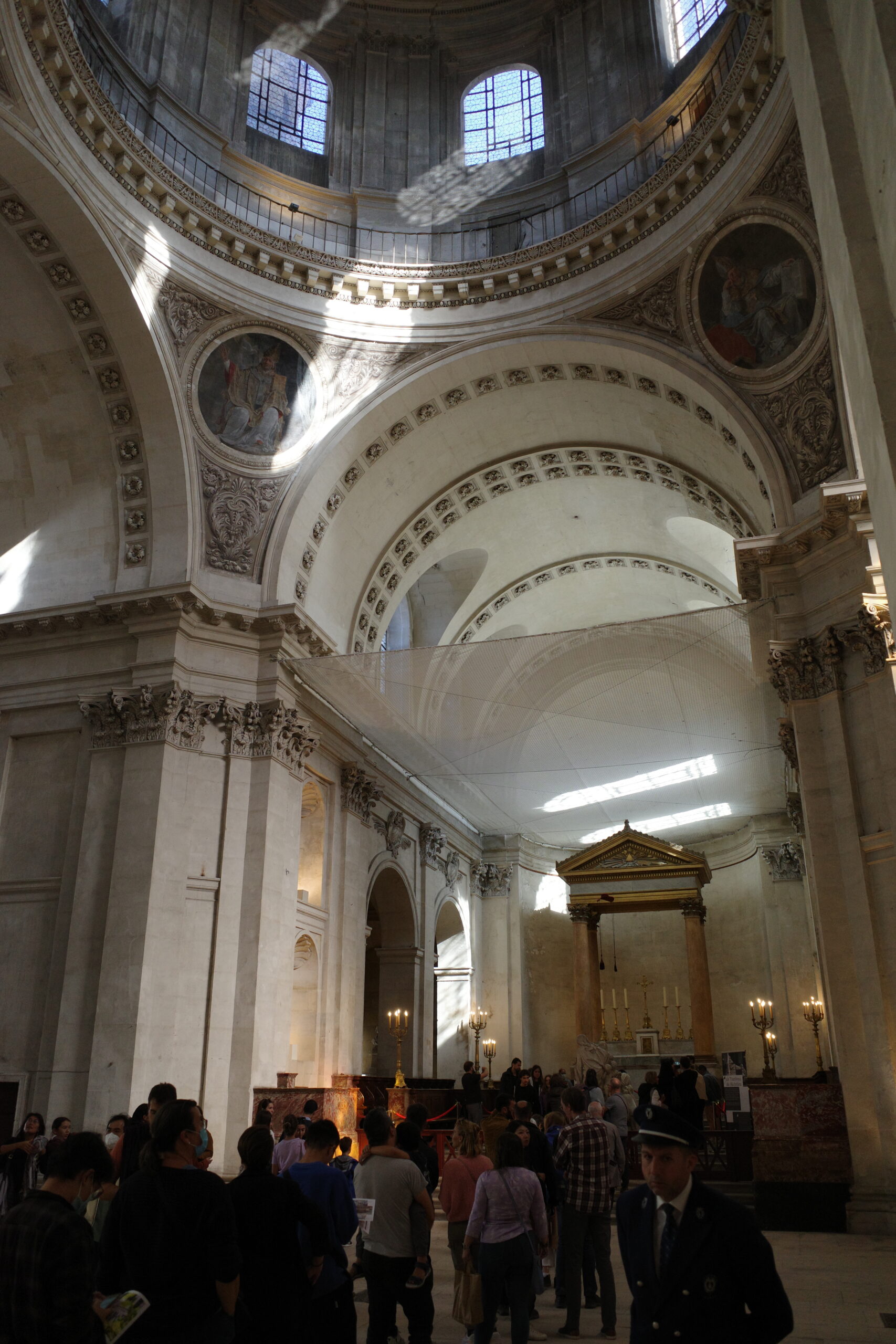
I then headed into the library — or at least the building that houses it. There was a queue just to enter it, and as I waited in line, it eventually grew to be over 200m long. On the inside of the building entrance, you could see the names of students who had died fighting for France during the Great War.
I passed the entrance and made my way to another lecture hall. This one was considerably smaller and narrower than the main amphitheater, but it still had a significant amount of grandeur. A painted ceiling appeared to depict a scene from Greek mythology but I wasn’t sure what it was exactly.
Incidentally, Christopher Nolan’s film Inception had a scene that was filmed in the Sorbonne. It’s the scene where Leonardo di Caprio’s tortured protagonist meets Eliot Page’s character, an American exchange student, to see how well she can deal with dreams.
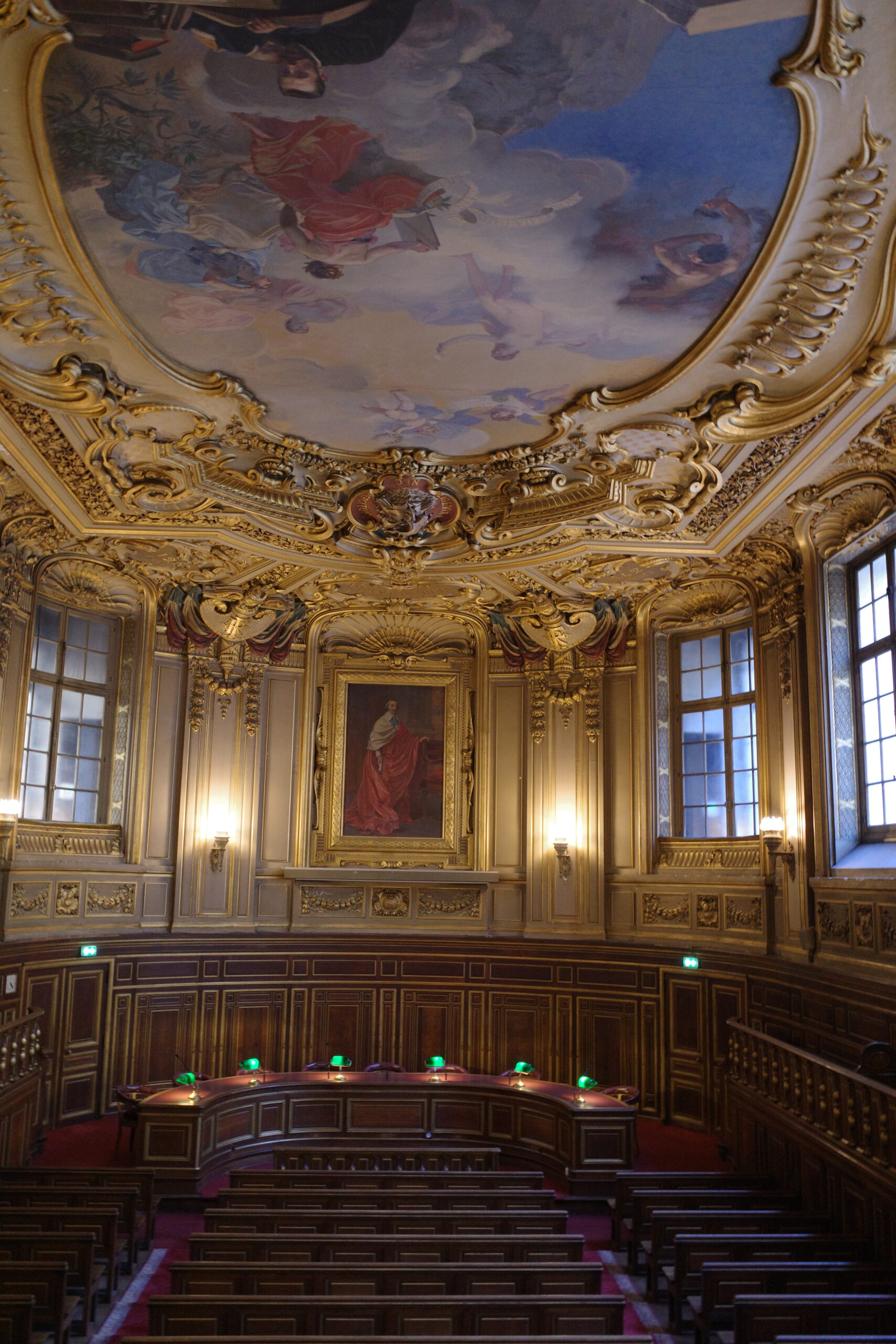
After the lecture hall, I went down a corridor and made my way into yet another lecture hall. Inside this one, a grand piano was perched on a stage. A painting depicting mythological figures was above, as was a Latin phrase PACEM SUMMA TENENT: “They hold the utmost peace”. This lecture theatre seemed to be more for arts performances, but I wasn’t entirely sure if that was indeed the case.
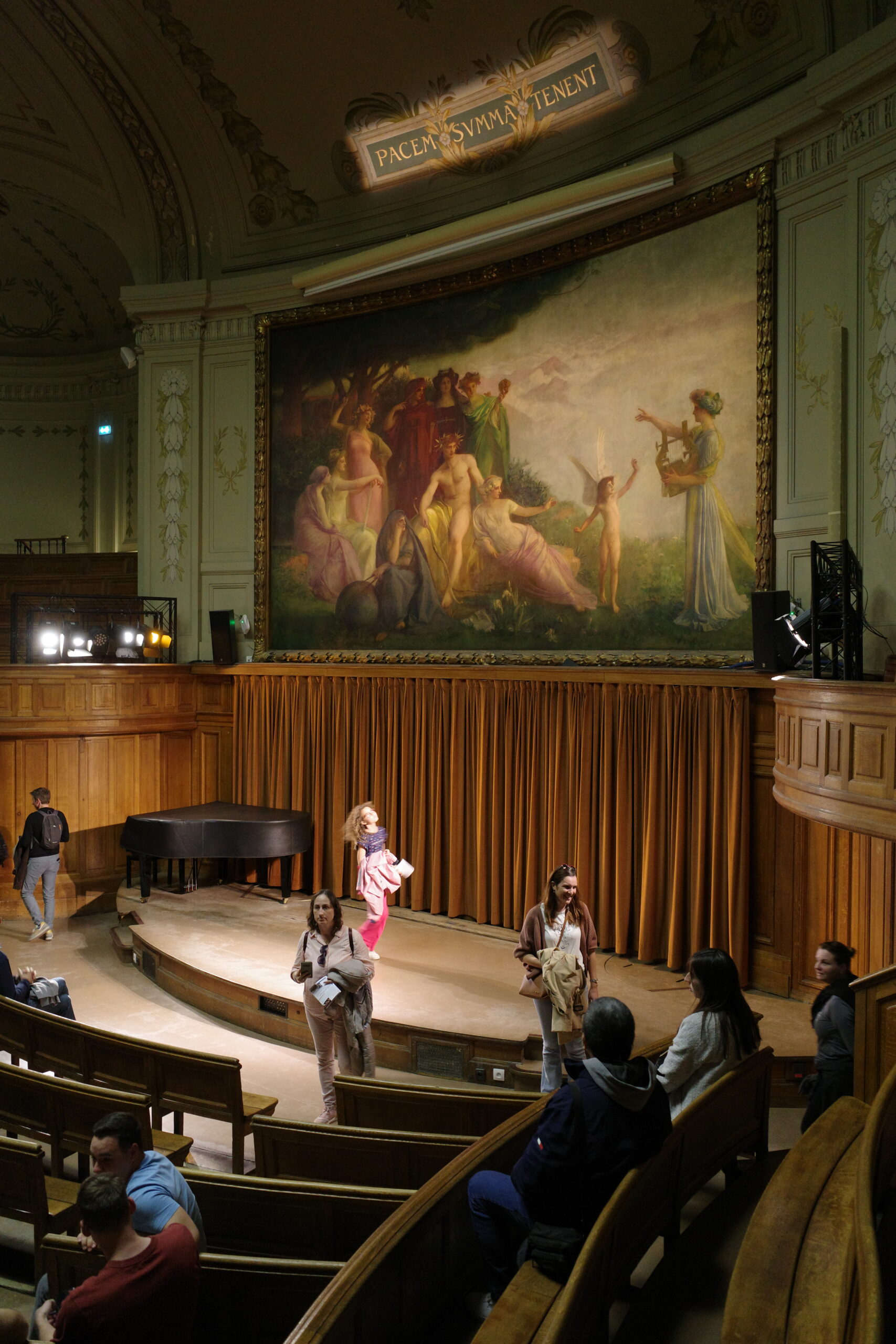
I then went up a level and entered the Bibliothèque interuniversitaire de la Sorbonne. Rows of mahogany tables with little white lamps filled out a room covered in paintings and wallpaper. With bright white sunlight streaming in through the windows, it felt impossibly cinematic. The only thing undermining this cinematic aura was the fact that everyone was taking selfies, as if aware that on a scale of 1–10 for Instagrammable places, this was an easy 10. Others were sitting at desks, lost in the white light of their screens.
I must say that in the decade since I had last been in the Sorbonne, one notable difference between then and now is the fact nowadays everyone is on their phones. Back in 2012, smartphones were starting to take over but they weren’t as omnipresent or as powerful as they are today. Nowadays you can barely go outside without seeing people playing on their phones. The advent of the iPhone seems to have changed the scenery completely.
While I had never studied in that library before, I did spend some time studying in the Bibliothèque Sainte-Genevieve, a library across the road from the Panthéon which James Joyce mentions in Ulysses and which appears in the Martin Scorsese film Hugo. That library was somewhat similar in appearance insofar as it had lamps and long rows of tables, although it was considerably larger. At that time, as much as I loved the vibe of the place, I actually found it hard to study there because the scenery was simply too distracting.
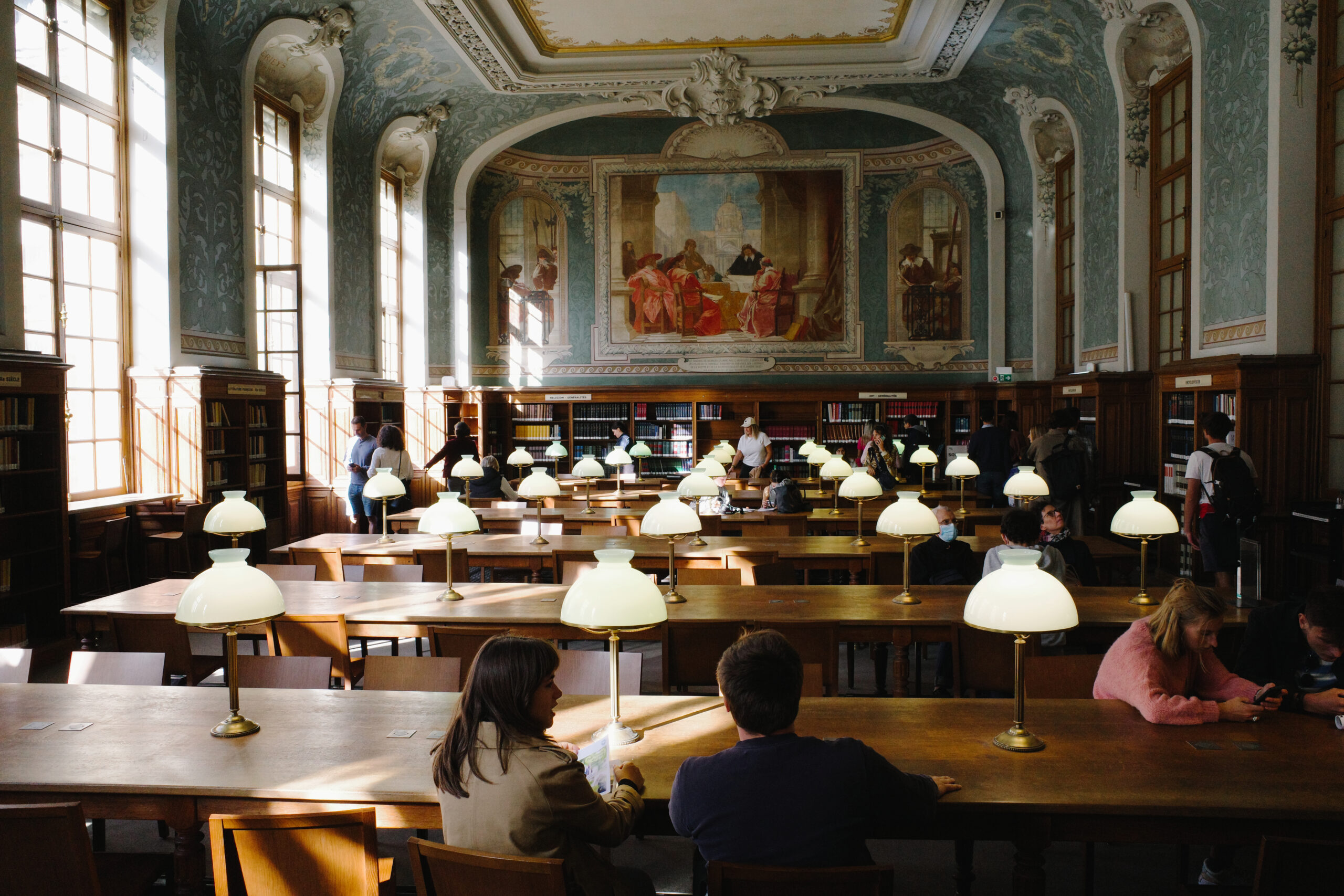
After exiting the library, I headed down some stairs and walked down a corridor. On a noticeboard, there were ads for English-languages classes, music performances, political organisations and other student things. It was only at this point that I felt like I was back at the university I knew. Everything else I had seen up til now had felt like a classical museum tour, but now, in this corridor, there was some semblance of 2022 student life.
Passing a bunch of vending machines selling chocolate, hot chocolate, coffee and sugary snacks, I went into a restroom. Not surprisingly, on the inside of one of the stalls, someone had written a Marxist message in permanent marker.
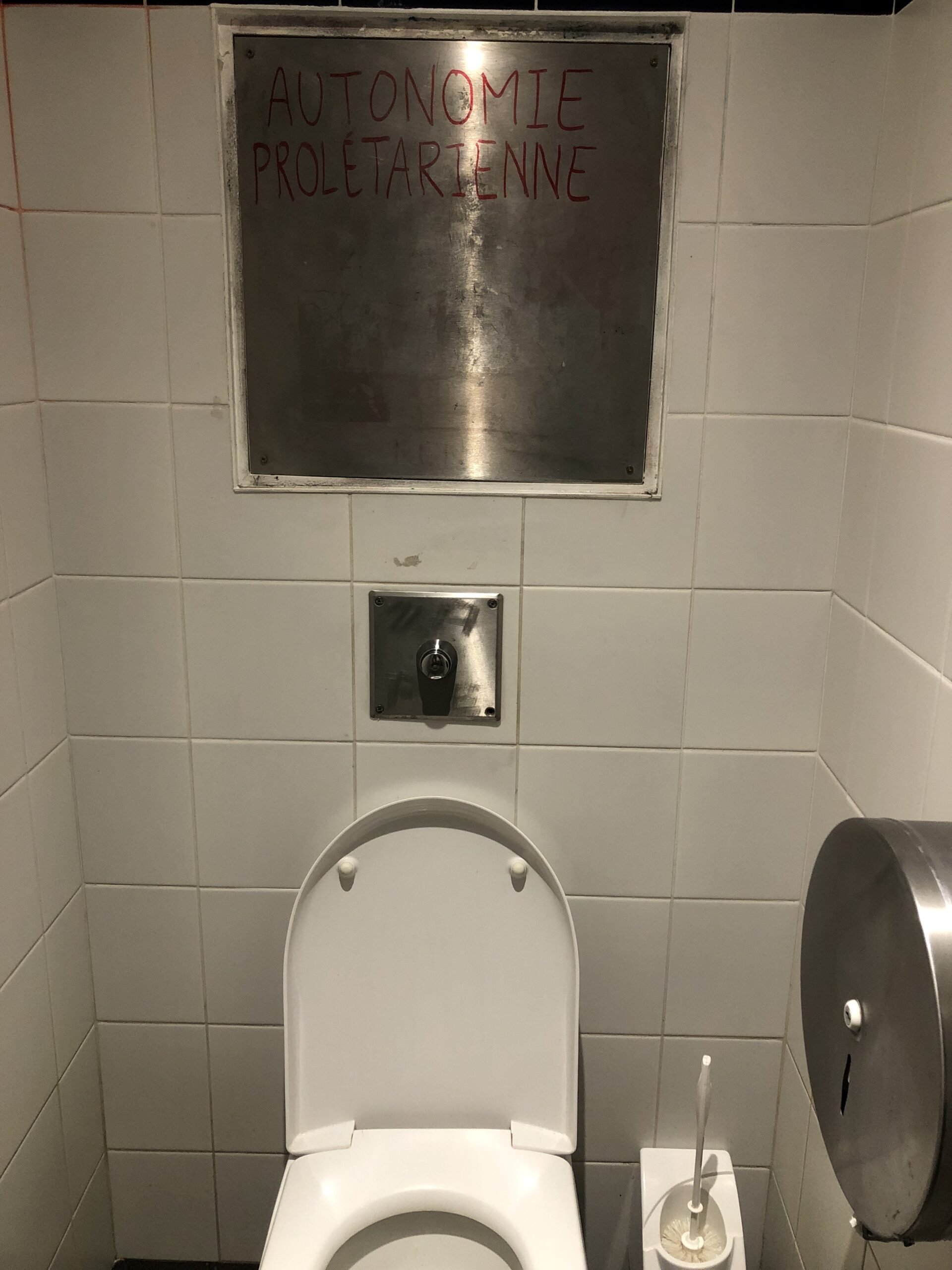
Political graffiti is always present in the Sorbonne toilets. When I was on exchange, I remember seeing graffiti from May 1968, when the student riots took place — an event that was fictionalised in Wes Anderson’s film The French Dispatch. It struck me as incredible that graffiti could last for so long, but perhaps the university never bothered to clean it up because if they did, someone would soon put it back up again.

One thing that struck me about the tour was the fact that everything in the building looked so clean. As a student, I remember seeing political graffiti, peeling ceilings, and walls in dire need of paint. In a way, the Sorbonne is Hogwarts with graffiti — an ancient institution that’s a little rough around the edges. Were it not for the fact that it was a place of learning, you could easily imagine the building as a haunted mansion in a horror movie.
The organisers probably chose to cordon off the parts of the building that showed off its rawer, less pristine side, as that would have given people quite a different idea of what the Sorbonne was like.
But that’s the Sorbonne I remember.
